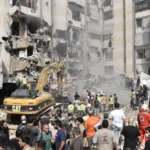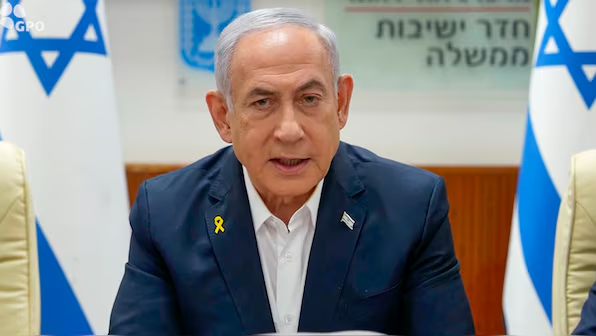Israeli Prime Minister Benjamin Netanyahu ordered a series of explosive attacks on Hezbollah operatives in September, an audacious step up in his campaign against the Lebanon-based Shi’ite militant group. The unusual operation saw blasts targeting pagers distributed throughout Hezbollah-controlled areas of Beirut, causing heavy casualties and injuries. The operation marked a significant shift in tactics for Israel, whose military had already been carrying out extensive drone-based attacks in the area.
Operation Pager Blasts in Hezbollah Enclaves
September 17 witnessed simultaneous explosions of thousands of pagers simultaneously in Hezbollah-controlled areas, especially in southern Beirut.
According to a spokesperson from Netanyahu’s office, the devices were weaponized and rigged to detonate upon receiving messages. Witnesses reported many injured by the blasts with wounds indicative of proximity to the detonating devices. Hezbollah, which has used pagers to communicate and avoid tracking for years now, suffered a severe breach of security, which the group described as one of its worst setbacks in terms of operation so far.
The second assault, however, took place the next day when Hezbollah members were attacked with weaponized walkie-talkies, making sure there were more dead and more body parts lying around. Altogether, 39 people were killed, and over 3,400 were injured, mainly with injuries in the eyes, amputated fingers, and abdominal wounds.(More)
Netanyahu’s Decision to Unite Internal Opposition
Reports say Netanyahu personally owned up to the responsibility of the pager attack as he briefed cabinet members that he had encountered stiff resistance from top defense officials and other politicians who did not digest his decision. Nevertheless, he decided to pursue the operation, indicating his resolve to heighten pressure on Hezbollah, viewed as one of the most essential Iranian allies in the region. Israeli media further reported that Netanyahu emphasized the need to attack Hezbollah’s communication methods, which Hezbollah had relied on in protection amid the continued cross-border clashes between the group and Israel.
Hezbollah’s Weak Point: Exploiting Communication Vulnerabilities
Pagers have been one of the low-technology means by which Hezbollah fighters have endeavored to avoid Israeli surveillance and tracking systems. However, this dependence had placed them at the risk of the innovative attack strategy that Israel opted for. The successful attack on Hezbollah’s dependence on alternative technologies was a way of cutting off Hezbollah’s internal coordination and operational security through the weaponizing of communication tools.
Escalation to Air Strike on Hassan Nasrallah
Coming from the blasts of the pagers, the Israeli forces further did their best to break up Hezbollah’s command structure. They reportedly killed the leader of Hezbollah, Hassan Nasrallah, in an airstrike. This increased campaign has heightened tension along Israel’s northern border and, since the war in Gaza broke out in October 2023, has led to a series of constant skirmishes between the Israeli Defense Forces and Hezbollah fighters. This has then pushed for more incursions into southern Lebanon as a strategic follow-up to its move, which puts across the intent to undermine Hezbollah’s influence in the area.
A Complex and Evolving Conflict
This newfound attack represents an escalation of epic proportions by Israel against Hezbollah within the frame of a more significant regional conflict. The consequences of these operations still have to be fully worked out, with fears that the broader conflict may involve Iran-backed groups. For the time being, Netanyahu’s authorizing these attacks indicates his will to trash the influence of Hezbollah, even at the cost of wider regional escalation.















